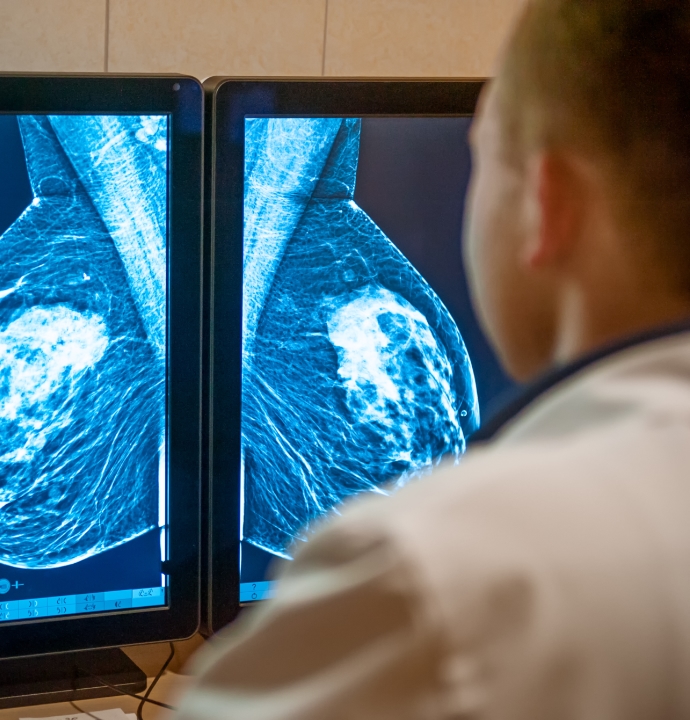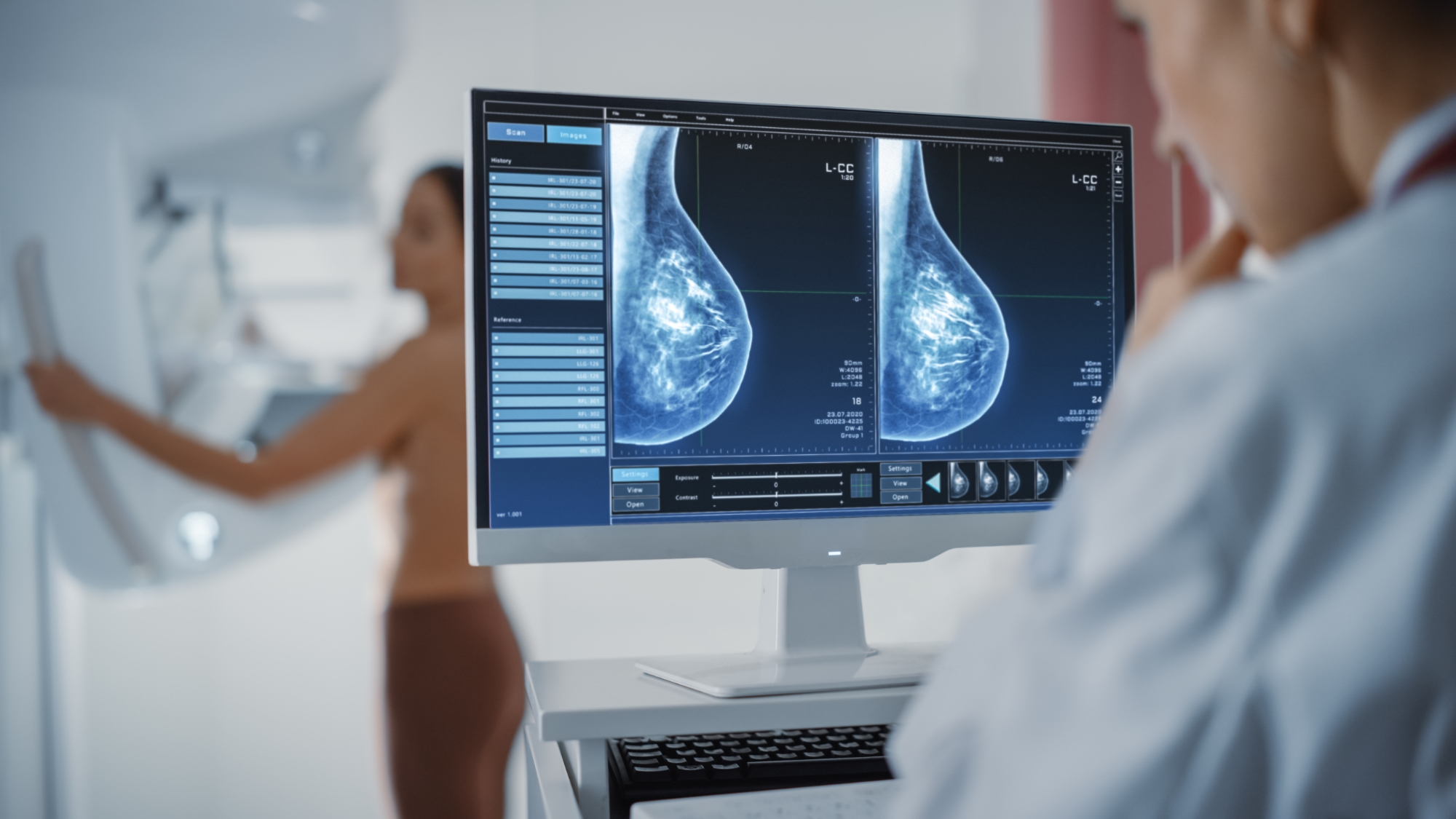BREAST CARE OVERVIEW
Being diagnosed with a breast issue can be a traumatic time in a woman’s life. The Breast Care Institute at Middle Tennessee Surgical Specialists tries to minimize the stress in treatment of these issues towards the goal of a successful completion of treatment. The physicians of The Breast Care Institute offer many services in the treatment of both benign and malignant breast disorders. These services include: genetic testing, simple biopsies, breast conservation, duct exploration, lymphoscintigraphy and sentinel node mapping as well as mastectomy and full nodal dissections. For those patients newly diagnosed with a BIRAD 4 or higher malignancy, we offer Patient Fast Tracking: we will consult with those patients within a single business day. Call if you have any questions about any of our services or if you wish to schedule an appointment.
GENETIC TESTING
For those women who are at a higher risk of developing breast cancer (those who have had 2 or more first-degree relatives diagnosed with breast cancer or a relative diagnosed before the age of 50) we offer genetic testing to see if they carry mutated BRCA 1 or BRCA 2 genes- those which indicate a higher risk of breast cancer.
GENETIC TESTING
For those women who are at a higher risk of developing breast cancer (those who have had 2 or more first-degree relatives diagnosed with breast cancer or a relative diagnosed before the age of 50) we offer genetic testing to see if they carry mutated BRCA 1 or BRCA 2 genes- those which indicate a higher risk of breast cancer.

BREAST CONSERVATION (LUMPECTOMY)
Breast conserving treatment consists of removing only the portion of breast affected by the tumor. The majority of women who chose this option have good cosmetic results and survival rates equal those of women who choose mastectomy. Women considering this option must understand that when removing the tumor, the margins (tissue surrounding the tumor) must be clear of affected cells. Obtaining clear tissue from around the tumor can be challenging as these cells are not visible during surgery. If tumor cells are found by Pathology in the margins of the lumpectomy specimen, further surgery would be required.

LYMPH NODES & SENTINEL NODE BIOPSY
The lymph system filters unwanted material from the body, including cancer cells. When cancer cells break off a breast tumor, they will most likely go to the axillary lymph nodes (lymph nodes under the arm). When performing a lumpectomy or a mastectomy, the surgeon will remove these lymph nodes to determine prognosis (the more nodes involved, the worse the prognosis). The surgeon will most likely begin by removing the first draining lymph node to the tumor (sentinel node) to be examined under a microscope. If this node is free of cancer cells, no others have to be removed, but if cells are found, others will be removed. Limiting the number of lymph nodes removed decreases the risk of later complications such as lymphedema.
MASTECTOMY
The lymph system filters unwanted material from the body, including cancer cells. When cancer cells break off a breast tumor, they will most likely go to the axillary lymph nodes (lymph nodes under the arm). When performing a lumpectomy or a mastectomy, the surgeon will remove these lymph nodes to determine prognosis (the more nodes involved, the worse the prognosis). The surgeon will most likely begin by removing the first draining lymph node to the tumor (sentinel node) to be examined under a microscope. If this node is free of cancer cells, no others have to be removed, but if cells are found, others will be removed. Limiting the number of lymph nodes removed decreases the risk of later complications such as lymphedema.

BREAST CONSERVATION (LUMPECTOMY)
Breast conserving treatment consists of removing only the portion of breast affected by the tumor. The majority of women who chose this option have good cosmetic results and survival rates equal those of women who choose mastectomy. Women considering this option must understand that when removing the tumor, the margins (tissue surrounding the tumor) must be clear of affected cells. Obtaining clear tissue from around the tumor can be challenging as these cells are not visible during surgery. If tumor cells are found by Pathology in the margins of the lumpectomy specimen, further surgery would be required.
LYMPH NODES & SENTINEL NODE BIOPSY
The lymph system filters unwanted material from the body, including cancer cells. When cancer cells break off a breast tumor, they will most likely go to the axillary lymph nodes (lymph nodes under the arm). When performing a lumpectomy or a mastectomy, the surgeon will remove these lymph nodes to determine prognosis (the more nodes involved, the worse the prognosis). The surgeon will most likely begin by removing the first draining lymph node to the tumor (sentinel node) to be examined under a microscope. If this node is free of cancer cells, no others have to be removed, but if cells are found, others will be removed. Limiting the number of lymph nodes removed decreases the risk of later complications such as lymphedema.
MASTECTOMY
The lymph system filters unwanted material from the body, including cancer cells. When cancer cells break off a breast tumor, they will most likely go to the axillary lymph nodes (lymph nodes under the arm). When performing a lumpectomy or a mastectomy, the surgeon will remove these lymph nodes to determine prognosis (the more nodes involved, the worse the prognosis). The surgeon will most likely begin by removing the first draining lymph node to the tumor (sentinel node) to be examined under a microscope. If this node is free of cancer cells, no others have to be removed, but if cells are found, others will be removed. Limiting the number of lymph nodes removed decreases the risk of later complications such as lymphedema.

